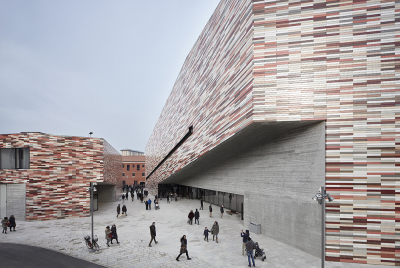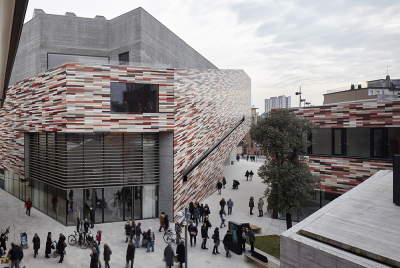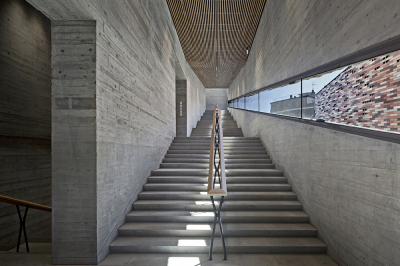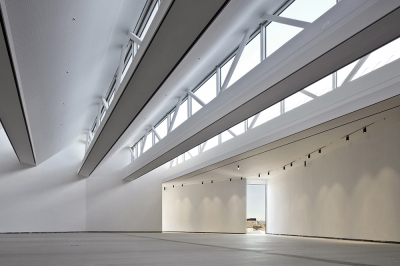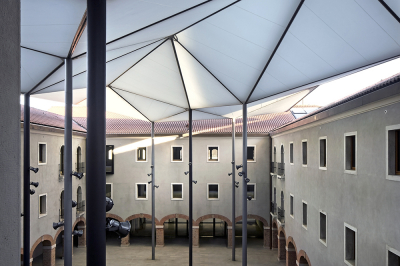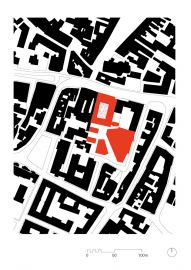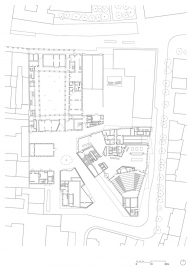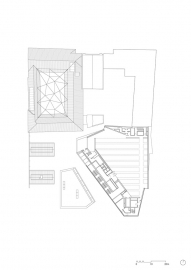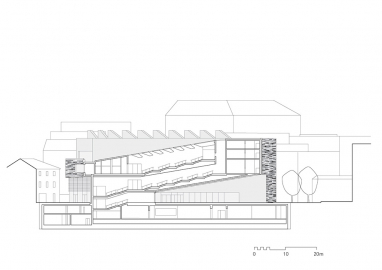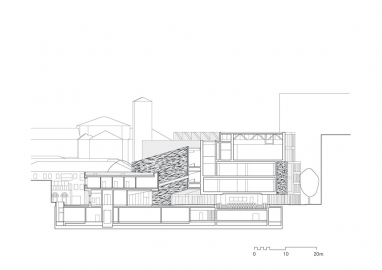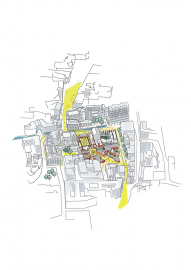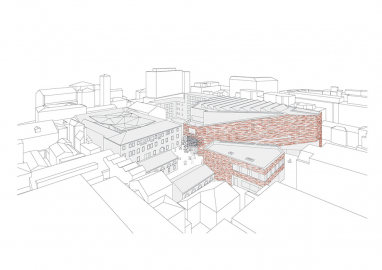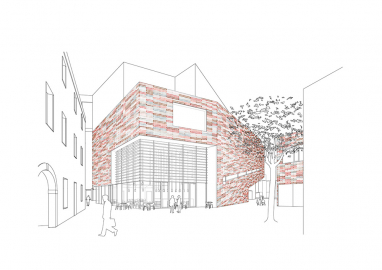M9 Museum District
M9 is a museum of the cultural inheritance of the 20th century, located in Mestre, the mainland gateway to Venice. An agent of urban renewal, M9 provides a point of local identification and helps to redress the disparity of cultural wealth between Mestre and the tourist magnet across the lagoon.
The M9 scheme consists of one larger and one smaller new building – for the museum and its offices, respectively – plus a former convent and an office building. Together they frame a new public square and open up a diagonal pedestrian link, opening up a central stretch of land that was formerly occupied by military institutions. The network of pedestrian links evolving around the new piazzetta seamlessly incorporates the courtyard of the 16th-century Convento delle Grazie, which is renovated and converted for uses that will complement those of the small museum quarter. Further, a public lecture hall, restaurant, shop and mediatheque on the ground floor of the new building extend the public realm into the museum.
Mestre always led a shadowy existence within the municipality of Venice as the ‘backyard’ of the lagoon city, even though the majority of Venetians live in Mestre. It is characterized by a heterogeneous population of mixed provenance and a clear lack of cultural offerings. As a social and programmatic place, M9 will enrich public life by a variety of activities.
M9 is an active museum with no thresholds to inhibit entry; it addresses residents and tourists, young and old alike. In its provision of a social location, the development as a whole sustains the lifeblood of the European city and offers an important economic stimulus for Mestre. The permanent exhibition occupies two ‘black box’ floors and takes a narrative approach to the history of modern Italy, while temporary exhibitions are housed in a naturally lit ‘white box’ on the top floor. A careful choreography of spaces and views directs the visitor through the museum, e.g. a long, dramatic staircase leads up to the galleries.
Complementing the visitor’s cerebral experiences in the virtual worlds of the exhibition the materiality emphasizes the sensual nature of the museums architecture. There is the rich range of surfaces that one encounters from the coloured ceramic tiles via the rough concrete to the smooth timber surfaces and the leather coated handrails. Most importantly however, there is the way the architecture is acting as a canvas to the ever-changing nuance and intensity of daylight. Be it in the soft light of the newly covered courtyard of the ex-convent, be it in contrasting light and shadow on the stairs leading into the museum or be it in the magnificent day-lit top floor. During the first year of work on the M9 precinct, our client and all stakeholders were so convinced of our overall urban renewal concept that they decided to purchase some properties bordering the site, extending our project to include the renovation and re-integration of additional buildings within the immediate neighborhood.

